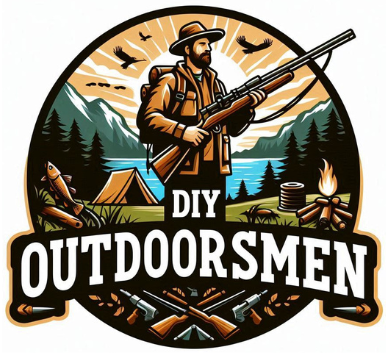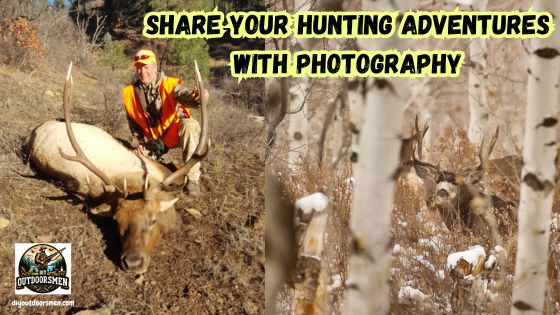Contents
- 1 Why Tell the Full Story of Your Hunt?
- 2 Catching the Pre-Hunt Excitement and Preparation
- 3 Including People: Companions and Candid Moments
- 4 Shooting Environments and Scenic Details
- 5 Taking Trophy Photos with Respect and Care
- 6 Working with Angles, Light, and Composition
- 7 Tips for Getting Better Photos in the Field
- 8 Gear Choices for Field Photography
- 9 Staying Respectful: The Bigger Picture
- 10 Real-World Examples of Storytelling
- 11 Frequently Asked Questions
- 12 Getting the Most from Your Hunting Photography
Capturing my hunting adventures through photography gives me a way to keep the memory alive long after the hunt is over. It also gives me a chance to share the experience with friends, family, and the wider hunting community. By thinking beyond the obvious trophy shot and focusing on the full adventure, my photos help tell a richer, more personal story.
QUICK LOOK: Tips for Taking Better Photos in the Field
- Keep the Camera Handy: I always have my camera or smartphone close by, so I don’t miss quick moments. Hunting is full of surprises, and it’s easy to miss a great shot if the camera is buried under gear.
- Shoot Wide and Tall: I take both horizontal and vertical photos. This gives me more options to share or print later, and I can tell the story in different ways.
- Snap Lots, Edit Later: I try not to get stuck on making every shot perfect in the moment. Instead, I take plenty of pictures and sort through them after the hunt. A few minutes of editing at home, cropping, tweaking brightness, or adjusting color, can make a good shot great.
- Think About Movement: Capturing motion, like someone hiking through tall grass or swinging binoculars into view, adds life to the story. Using burst mode helps catch the perfect split-second expression or action.
- Include the Little Stuff: Some of my favorite photos come from noticing overlooked details, like the pattern of spent shells, a worn patch on a jacket, or the condensation on a coffee mug early in the morning.
Why Tell the Full Story of Your Hunt?
While a trophy photo can be a powerful image, I’ve found that the best hunting photos cover much more. Hunting is about long mornings, quiet hikes, teamwork, and the connection with the outdoors. Highlighting these moments brings out the real heart of my experience and often means more to others than any single harvest photo could.
Photographing every step, from packing the truck to setting up the blind, shows what the hunt truly felt like. It’s about passing along my memories and even sharing the heritage of hunting itself.
For me, these images keep the tradition alive and help newcomers see a side of hunting that might get missed if I only share the final outcome. Shooting the details that go into planning—checking the weather, loading gear, and chatting with friends—brings out the excitement that happens before even setting foot in the wild.
Catching the Pre-Hunt Excitement and Preparation
The story starts well before I set foot in the field. I like to photograph my gear laid out the night before, the well-worn boots by the door, and the sun just starting to rise as I head out. These shots remind me of the anticipation and effort that goes into a hunt.
I also enjoy capturing personal touches, like a handed-down hunting jacket or a favorite thermos, which add warmth and show a bit of family heritage. These details help bring my story to life and make the photos more interesting for those who see them later.
Sometimes snapping shots of checklist moments, such as marking off tasks or sharing a quick breakfast in the chilly dawn, helps people get a real sense of the routine and the excitement that comes with it.
Including People: Companions and Candid Moments
I always try to include my hunting partners in my photos. Capturing genuine reactions or teamwork during the hunt adds a sense of camaraderie and helps others connect with the experience. Sometimes, a shot of someone studying the map, sharing a laugh over coffee, or glassing the ridgeline tells the story better than words ever could.
Adding people to photos also makes the experience more inviting for friends or family who didn’t come along. It draws them into my adventure with me, even if they’re seeing it after the fact. Documenting those inside jokes, shared meals, or thoughtful conversations around the campfire lets others track down the real spirit of the group and understand what makes hunting special for us.
Shooting Environments and Scenic Details
No two hunting trips are ever quite the same, especially when it comes to landscapes. I find that photographing the terrain, changing weather, and even the unexpected moments, like a burst of fog or a flock of birds passing overhead, can show just how unique each hunt is.
Wide-angle shots of the area I’m hunting in, closeups of tracks or leaves, and even the setup at camp all add depth to my hunting story. Focusing on these details gives viewers a real sense of where I’ve been and what I saw.
I like taking macros of morning dew on grasses or frost on a rifle barrel—little elements that might otherwise slip by unnoticed. Sometimes, snapping the sky at dawn or shifting my angle to shoot through low-hanging branches brings out the atmosphere in a way that viewers can almost feel the chill or smell the pine needles.
Taking Trophy Photos with Respect and Care
When it’s time for a harvest photo, I aim for a clean, respectful approach. I make sure the animal is displayed with dignity; no awkward or disrespectful poses, and definitely no clutter or mess in the background. I usually kneel or sit beside the animal, smiling or showing gratitude, which keeps the image positive and thoughtful.
I take photos before field dressing and quickly tidy up the area. These little steps go a long way in honoring the animal and ensuring my photos will be well-received by anyone who sees them, including non-hunters. Sometimes, adding a heartfelt note in a photo caption can set the right tone and help others get a sense of the meaning behind the moment.
Working with Angles, Light, and Composition
Playing with different shooting angles can totally change the atmosphere of the image. Sometimes I get down low to the ground for a dramatic look, or shoot from above to show the full environment.
For composition, I often use the rule of thirds (mentally dividing the frame into a grid and placing my subjects at the intersections). This gives the image balance and draws the viewer’s eye naturally to what’s most important.
Lighting is really important. I prefer to take photos during the golden hours, just after sunrise or before sunset, when the light is softer and warmer. Cloudy days work nicely as well, since the diffused light helps keep shadows gentle and colors true. If the sun is bright and causing harsh shadows, I’m not afraid to use the flash to brighten up faces or key details.
Using a wide aperture (low f-stop number) helps blur the background and make my subject pop. It’s easy to do with most cameras and even many modern smartphones. Sometimes, shooting in the shade or turning my subject slightly can help tone down harsh light and create a more natural look, regardless of whether I’m using a phone or a regular camera.
Tips for Getting Better Photos in the Field
- Keep the Camera Handy: I always have my camera or smartphone close by, so I don’t miss quick moments. Hunting is full of surprises, and it’s easy to miss a great shot if the camera is buried under gear.
- Shoot Wide and Tall: I take both horizontal and vertical photos. This gives me more options to share or print later, and I can tell the story in different ways.
- Snap Lots, Edit Later: I try not to get stuck on making every shot perfect in the moment. Instead, I take plenty of pictures and sort through them after the hunt. A few minutes of editing at home, cropping, tweaking brightness, or adjusting color, can make a good shot great.
- Think About Movement: Capturing motion, like someone hiking through tall grass or swinging binoculars into view, adds life to the story. Using burst mode helps catch the perfect split-second expression or action.
- Include the Little Stuff: Some of my favorite photos come from noticing overlooked details, like the pattern of spent shells, a worn patch on a jacket, or the condensation on a coffee mug early in the morning.
Gear Choices for Field Photography
I tend to stick with lightweight, weather-resistant cameras and cases. My smartphone is often enough, especially with a solid camera app and a small tripod or selfie stick for those times I want to be in the photo, too.
Extra batteries are really handy. When using a regular camera, I go with a lens that covers a good range; a 2470mm zoom is versatile for both landscapes and closer shots. No matter what camera I use, I make sure it’s easy to access and that I know how to change basic settings quickly, even with cold hands.
This keeps things relaxed and lets me stay focused on the hunt, not just the photos. I also keep a lens cloth in my pocket for wiping off dirt or moisture, so my images stay sharp. Some hunters prefer compact action cameras clipped to their gear to catch candid video and photos hands-free, adding even more ways to show the adventure.
Staying Respectful: The Bigger Picture
Being mindful of how I represent hunting in my photos is super important. Clean, positive, and respectful images help shape how the public sees hunting, and they encourage respectful discussion even among people who might not share my views.
For me, this builds a bridge between different communities and highlights the ethical side of the sport. Including a caption or a personal note can further put in perspective what the hunt means to me and why I value every part of it.
Real-World Examples of Storytelling
I like to look back at some of my own albums and see that the pictures tell a complete story, from pre-dawn coffee to the final walk home. One hunt I remember especially well ended with a foggy sunrise and a group photo by a worn-out thermos, with all of us tired but happy. That image sums up the spirit of the day in a way no single trophy shot ever could.
- Environmental Portraits: Showing a hunter glassing the horizon with mountains in the distance, to capture focus and anticipation.
- Heirloom in Hand: Holding a handed-down hunting knife over a map, highlighting family tradition and planning.
- Quiet Moments: Photographing boot prints at the edge of a stream or coffee by a campfire, to show the quieter, personal side of hunting.
- Camp Life: Documenting moments like fixing gear, prepping a simple meal, or tending to the fire helps round out the story and sheds light on the full field experience.
Frequently Asked Questions
Here are some answers to questions I get from friends who are starting to bring cameras along on their hunts:
What kind of camera works best for hunting photos?
I use my smartphone for quick shots but carry a basic digital camera for when I want really crisp images. Weather resistance makes a camera easier to use in the field, but practice and placement matter more than any fancy feature. Don’t forget to check settings before each day, since conditions can switch things up fast.
How do I take better photos in low-light conditions?
Early mornings and late evenings are common hunting times, so I shoot with wide apertures, boost ISO a little if needed, and use steady hands or a tripod to avoid blurry pictures. Even a small flashlight is useful for filling in faces if it’s really dark. Try using the exposure adjustment on your phone’s camera app to brighten up a shot without making it grainy.
I believe it’s fine as long as the photo is respectful, clean, and positive. I think about how non-hunters might see it and always add context about the hunt and the respect I have for the animal. Mentioning local traditions or conservation efforts in your caption can create more understanding even among those who don’t hunt.
Getting the Most from Your Hunting Photography
For me, sharing my hunting adventures through photography is about including the whole adventure, respecting every part of the process, and creating memories that last. Focusing on the preparation, people, landscapes, and ethical presentation gives me photos I’m proud to share.
Every hunt gives a new chance to grow as both a photographer and a storyteller, and passing on that story helps keep the spirit of hunting alive for generations to come.
Most Recent Articles:
- Complete Guide On Tracking Game Animals
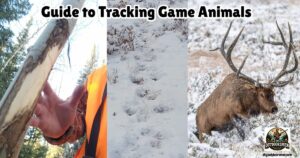
- DIY 4-Step Guide To Field Dressing And Quartering A Deer
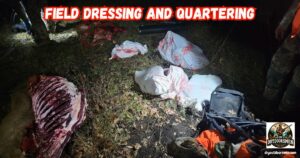
- Night Vision Binoculars For Nocturnal Hunting
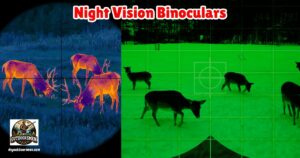
- The Science Behind Camouflage Patterns For Deer Hunting

- Binocular Accessories For Hunters

- 9 Tips for Using Trail Cameras To Track Deer Movements

As always, stay safe, enjoy the journey, and please try to leave it cleaner than you found it. If you have any comments, questions, ideas, or suggestions, please leave them in the comment section below, and I’ll get back to you ASAP. You can follow us on YouTube: Man Art Creations for videos of our DIY Adventures.
P.S. Thanks so much for checking out our blog; we really appreciate it. Just so you know, we may receive a commission if you click on some of the links that appear on our site. This helps us keep our content free and up-to-date for everyone. We appreciate your support!
